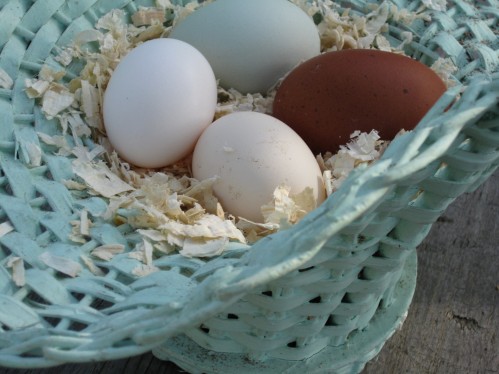 On Easter, my hens laid four beautiful eggs for me, one egg from each breed I have. They were so beautiful, I had to put them in a pastel Easter basket, and share them with you. There is something so special, and perfect about freshly laid eggs from your backyard flock. It is like Easter every day.
On Easter, my hens laid four beautiful eggs for me, one egg from each breed I have. They were so beautiful, I had to put them in a pastel Easter basket, and share them with you. There is something so special, and perfect about freshly laid eggs from your backyard flock. It is like Easter every day.
I currently have five hens in my flock, from four different chicken breeds. Each hen lays an egg, color and size specify to her breed. I knew, by looking at my hen's eggs, who had laid an egg. Please bear in mind, that my hens range in age from nearly 8 years old to six months.
If you recall, Julia, my wonderful honey-feathered Ameraucana hen, surprised me last spring by laying a miracle pastel blue-green colored egg at nearly 7 years old. This spring at nearly 8 years old (in May), she once again started laying. It is a surprise, since she hasn't laid an egg in about a year. Julia laid a small "pullet" size egg the day before Easter, and then on Easter day laid this incredible full-size perfect pastel-blue egg. What a gift. Really, it is incredible for a hen to be laying at nearly 8 years old. She is such a sweetheart. She will lay a few eggs more this spring, and then drop off for the rest of the year.
Coco, my French Wheaten Maran hen is just two years old, and laid the massive "chocolate-colored" egg on Easter. French Marans, typically are a very large hen. Coco weighs nearly 7 pounds. Her eggs are very desirable for their size, and tinting of dark chocolate color.
It is hard to tell the difference in the photo, but Charley, my White-Crested Blue Polish hen laid the slightly "bone colored" egg in the foreground. She lays a smaller egg, in ratio to her smaller body size. She is just six months old, and laying well. Needless to say, she is the "clown" in the flock with her "tossled" plume of feathers and personality.
The "cream-colored" egg behind Charley's is an egg laid from one of my Silver Spangled Hamburgs, Dolly and Dahlia. Silver Spangled Hamburgs are elegant faithful layers, with smaller eggs, and a smaller body type. An old breed, originating in Europe, they were at one time called "the Dutch every day layer."
What a wonderful Easter gift from my hens. These eggs are so fresh and tasty, it is hard really to describe them. They are so beautiful visually, it is hard to think of eating them. Yet, that is the best part. There is no comparison for cooking and baking with fresh eggs, making perhaps a spring frittata, and the delight in raising your own hens.
Please share if you have multiple chicken breeds in your flock. Please comment on your experience using fresh eggs from your own flock.
In case you missed it last week, Martha Stewart did a show on chickens, and offered quite a few interesting links and information on chickens on her website, Martha Stewart Show.

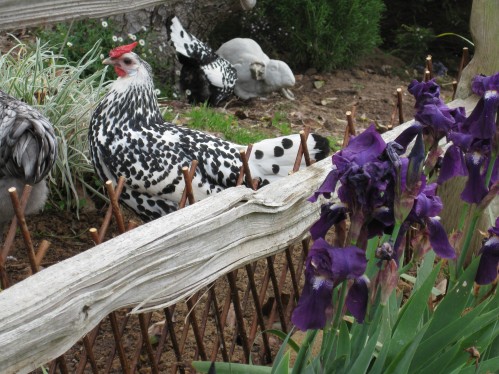
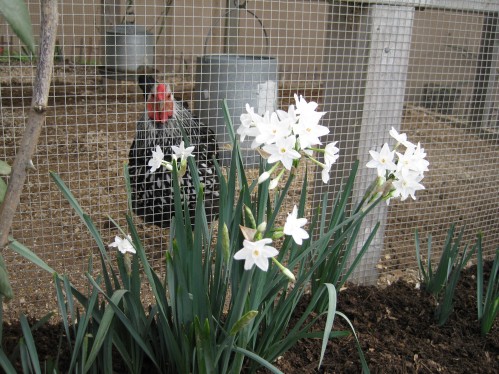
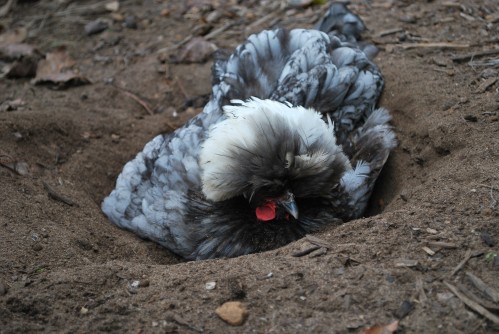
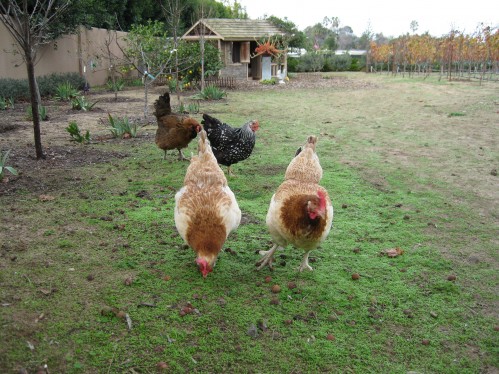
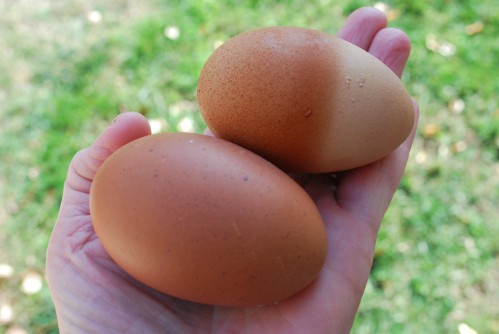
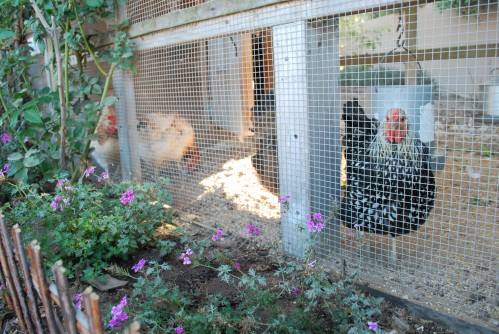
 There is something about chickens which just fascinate children. Whenever we have children visiting, it is always the chickens and chicken coop they want to venture to first. Maybe, it is because they don't have the opportunity to see chickens, other then in a book, or at the zoo. Maybe it is because chickens are relatively small in size, generally not aggressive, communicate in "coos and clucks", can be hand-fed treats, and often are as curious about children as children are about them.
There is something about chickens which just fascinate children. Whenever we have children visiting, it is always the chickens and chicken coop they want to venture to first. Maybe, it is because they don't have the opportunity to see chickens, other then in a book, or at the zoo. Maybe it is because chickens are relatively small in size, generally not aggressive, communicate in "coos and clucks", can be hand-fed treats, and often are as curious about children as children are about them.